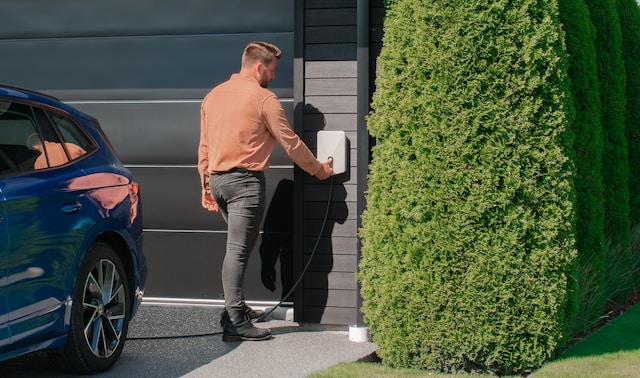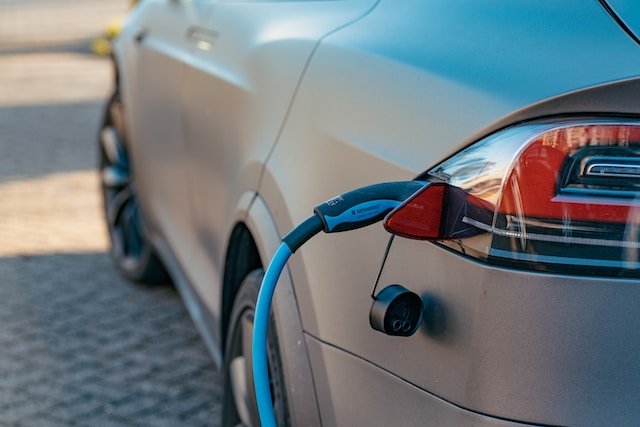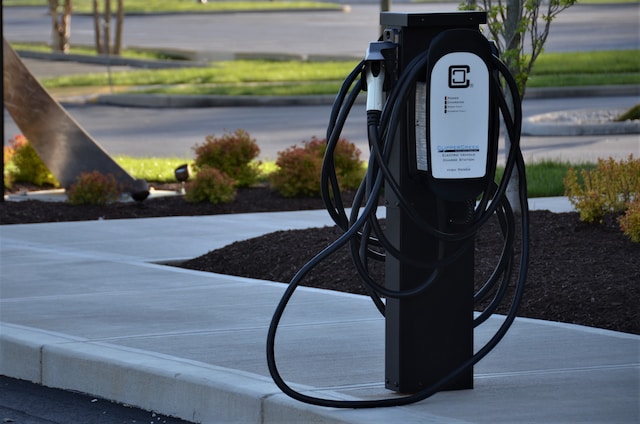
The era of fossil fuel-guzzling automobiles is rapidly being eclipsed by a new wave of innovation – the electric vehicle (EV). As the concerns about climate change and the depletion of finite resources loom larger than ever, the adoption of EVs represents a bold and necessary step towards a sustainable future.
Unlike conventional vehicles, which rely on internal combustion engines to convert gasoline or diesel into mechanical energy, EVs are powered by rechargeable batteries. These batteries supply electricity to an electric motor, propelling the vehicle forward with quiet efficiency. With zero tailpipe emissions, EVs offer an enticing promise: to dramatically reduce greenhouse gas emissions and combat air pollution in urban environments.
Not too long ago, skeptics dismissed EVs as niche products, doomed to remain on society’s periphery. However, recent advancements in battery technology, coupled with ambitious government initiatives and automaker commitments, have catapulted electric vehicles into the mainstream. As a result, major automakers have shifted their focus towards developing compelling EV models, signaling an unmistakable sea change in the automotive industry.
Types of Electric Vehicles
Electric vehicles (EVs) come in various forms, each with its unique propulsion system and capabilities. Understanding the different types of electric vehicles is crucial in grasping the diversity within the electric vehicle market.
Battery Electric Vehicles (BEVs)
Battery Electric Vehicles, commonly known as BEVs, are entirely powered by electricity. They store electrical energy in large batteries, which is used to drive an electric motor. Here are some key features of BEVs:
- Pure Electric Operation: BEVs rely solely on electricity, producing zero tailpipe emissions. They are considered the most environmentally friendly of all electric vehicles.
- Long Battery Range: Advancements in battery technology have increased the range of BEVs, allowing drivers to travel significant distances on a single charge.
- Charging Infrastructure: BEVs require charging stations for replenishing their batteries. Charging times can vary, but fast-charging options are becoming more common.
Plug-in Hybrid Electric Vehicles (PHEVs)
Plug-in Hybrid Electric Vehicles, or PHEVs, combine an internal combustion engine (typically gasoline) with an electric motor and a battery. These vehicles offer a hybrid driving experience with some distinctive features:
- Electric and Gasoline Modes: PHEVs can operate in electric-only mode, gasoline-only mode, or a combination of both. This flexibility is advantageous for longer trips.
- Limited Electric Range: PHEVs have a limited all-electric range compared to BEVs, making them suitable for shorter commutes without using gasoline.
- Charging Options: PHEVs can be charged through standard electrical outlets, which is convenient for home charging. They can also operate like conventional hybrids by using gasoline.
Hybrid Electric Vehicles (HEVs)

Hybrid Electric Vehicles, or HEVs, are not purely electric but combine a gasoline engine with an electric motor. They are designed for maximum fuel efficiency and reduced emissions:
- Efficient Fuel Use: HEVs use regenerative braking and the electric motor to assist the gasoline engine, optimizing fuel consumption.
- No Plug-in Charging: Unlike PHEVs and BEVs, HEVs do not require plug-in charging. They generate electricity through regenerative braking and the internal combustion engine.
- Sustainability: HEVs reduce emissions and improve fuel efficiency, although not to the extent of fully electric vehicles.
Fuel Cell Electric Vehicles (FCEVs)
Fuel Cell Electric Vehicles, often referred to as FCEVs, are powered by hydrogen fuel cells. These vehicles are still emerging but hold promise:
- Hydrogen Fuel: FCEVs use hydrogen gas to generate electricity through a chemical process in the fuel cell. The only emission is water vapor, making them a zero-emission option.
- Limited Infrastructure: FCEVs require hydrogen refueling stations, which are less common compared to charging stations for BEVs.
- Environmental Impact: FCEVs have the potential to significantly reduce greenhouse gas emissions and improve air quality, but their adoption is hindered by infrastructure challenges.
How Electric Vehicles Work
Understanding the mechanics of how electric vehicles (EVs) operate is essential to appreciate the environmentally friendly and energy-efficient technology behind them.
Battery Technology

Electric vehicles rely on advanced battery technology to store and deliver electrical energy to the vehicle’s motor. This technology is the cornerstone of their operation.
Most electric vehicles use lithium-ion batteries due to their high energy density and long cycle life. These batteries efficiently store and release electricity. The battery stores electrical energy, typically measured in kilowatt-hours (kWh). The energy is used to power the electric motor and other vehicle systems. When the EV is plugged in, the battery is charged through an electric power source. The stored energy is then discharged to propel the vehicle.
Charging Infrastructure
Charging an electric vehicle is made possible by a network of charging infrastructure. This network is crucial for EV owners and includes various types of charging stations.
- Level 1 Charging: This is the slowest charging option and is typically done at home using a standard electrical outlet. It provides a range of about 2-5 miles per hour of charging.
- Level 2 Charging: Common in residential and commercial settings, Level 2 chargers offer a faster charging rate, adding about 10-60 miles of range per hour.
- Fast Charging (DCFC): Direct Current Fast Charging stations are found along highways and in urban areas. They can charge an electric vehicle to 80% or more within 30 minutes.
- Charging Time: The time it takes to charge an electric vehicle depends on the battery’s capacity, the charger’s power level, and how empty the battery is when charging begins.
Regenerative Braking
One of the notable features of electric vehicles is regenerative braking, which helps recover energy during deceleration. When a driver lifts off the accelerator or applies the brake, the electric motor runs in reverse, acting as a generator. This process converts kinetic energy into electrical energy, which is then stored in the battery. Regenerative braking improves the overall energy efficiency of electric vehicles by reducing wasted energy during braking.
Energy Efficiency
Electric vehicles are known for their high energy efficiency compared to traditional internal combustion engine (ICE) vehicles. Electric motors are inherently more efficient than internal combustion engines. They can convert a higher percentage of electrical energy into mechanical energy, minimizing energy loss as heat.
Electric vehicles do not need to idle, which is common in ICE vehicles. Idling consumes fuel in traditional vehicles, resulting in energy waste and emissions. Electric vehicles have fewer moving parts than ICE vehicles, reducing maintenance requirements and improving overall efficiency.
Environmental Impact
Electric vehicles (EVs) have a profound effect on the environment, offering several advantages over traditional internal combustion engine (ICE) vehicles.
Reduced Greenhouse Gas Emissions
One of the primary environmental benefits of electric vehicles is their potential to significantly reduce greenhouse gas emissions. Electric vehicles produce zero tailpipe emissions, as they do not burn fossil fuels. This eliminates the direct release of carbon dioxide (CO2), nitrogen oxides (NOx), and other harmful pollutants into the atmosphere.

The environmental impact of EVs depends on the source of electricity used for charging. In regions with a high proportion of renewable energy sources, EVs have an even lower carbon footprint. While manufacturing and disposing of EV batteries have environmental costs, the overall lifecycle emissions of EVs are often lower than those of ICE vehicles due to reduced operational emissions.
Air Quality Improvements
Electric vehicles also contribute to improvements in air quality, particularly in urban areas. EVs reduce emissions of pollutants such as NOx, particulate matter (PM), and volatile organic compounds (VOCs), which are known to contribute to smog and respiratory problems in cities.
EVs are noticeably quieter than ICE vehicles, leading to less noise pollution in urban environments. This can positively impact the well-being of urban residents. Improving air quality through the adoption of electric vehicles can lead to fewer cases of respiratory diseases and other health issues related to air pollution.
Lifecycle Analysis
To assess the overall environmental impact of electric vehicles, a comprehensive lifecycle analysis is necessary. The production of EVs, particularly their batteries, can have a higher environmental impact compared to traditional vehicles. However, ongoing advancements in battery technology are reducing these impacts.
As previously mentioned, EVs have lower operational emissions, primarily due to reduced greenhouse gas emissions. Proper disposal and recycling of electric vehicle batteries are essential to minimize environmental impacts. Recycling programs are emerging to address this concern. Numerous studies have compared the environmental footprint of EVs with that of ICE vehicles, taking into account the full lifecycle. The results generally favor EVs, especially as electricity generation becomes cleaner.
Challenges of Electric Vehicles

Despite their many advantages, electric vehicles face several challenges that impact their widespread adoption.
- Range Anxiety: Many EVs have a limited driving range compared to ICE vehicles, causing concern about long-distance travel.The availability of charging stations, especially fast-charging ones, can be inconsistent, adding to range anxiety.
- Charging Infrastructure: Although Level 2 chargers are faster than standard electrical outlets, charging an EV still takes longer than refueling an ICE vehicle. The density and accessibility of public charging stations vary, affecting the convenience of EV ownership.
- Battery Recycling and Sustainability: The disposal and recycling of electric vehicle batteries present environmental challenges. Developing sustainable battery recycling processes is crucial. The demand for rare and valuable materials for battery production can pose ethical and environmental concerns.
Electric vehicles are not without their challenges, but their advantages in terms of cost savings, reduced maintenance, and a quieter, more efficient driving experience make them an increasingly attractive choice for environmentally conscious consumers. Addressing challenges like range anxiety and charging infrastructure will play a significant role in accelerating the adoption of EVs and their integration into everyday transportation.
With their potential for zero tailpipe emissions and improved air quality, electric vehicles play a pivotal role in mitigating climate change and reducing the environmental impact of transportation. As advancements continue in battery technology and energy generation, the environmental benefits of electric vehicles are expected to increase, making them a crucial component of a sustainable future.


